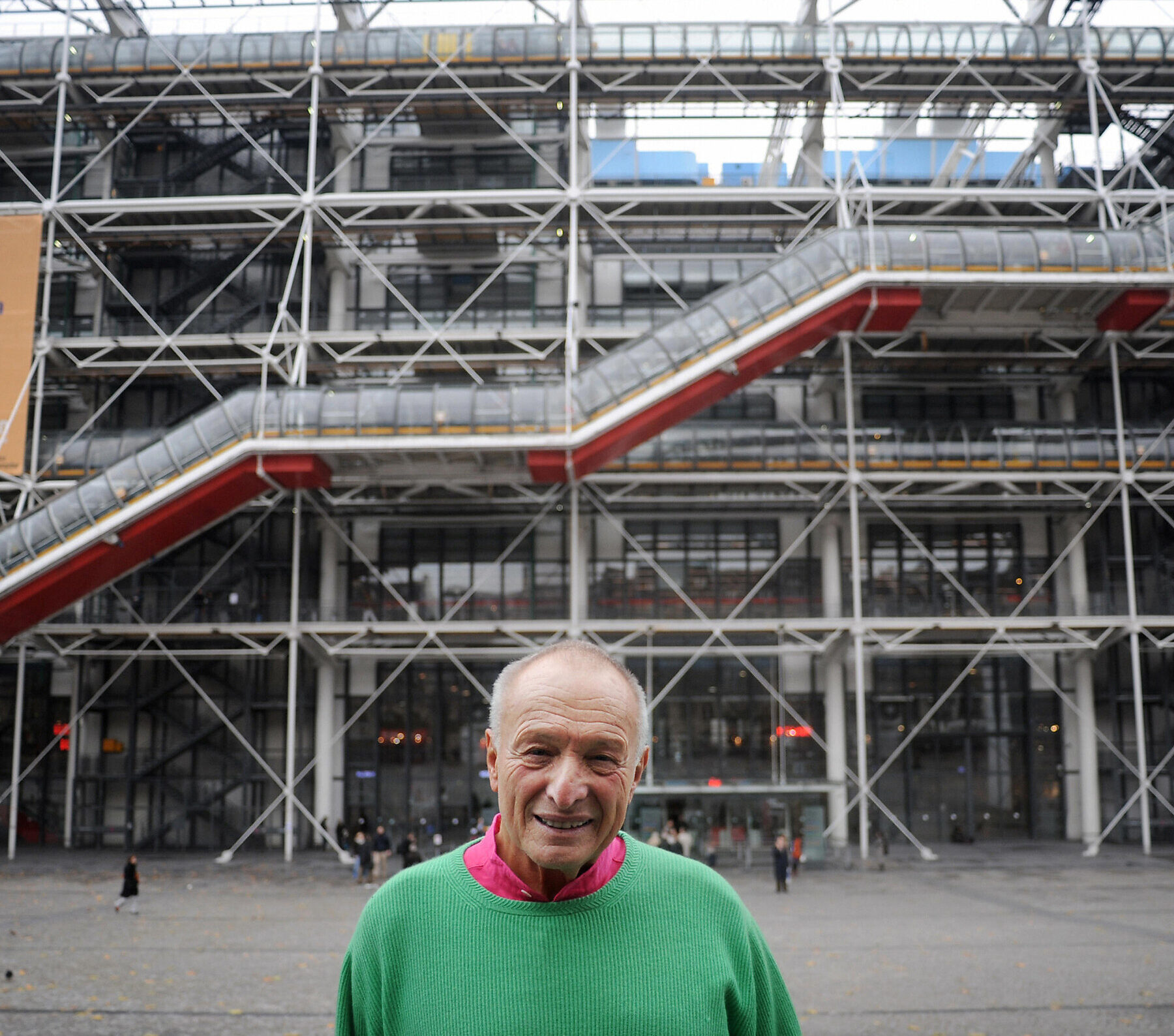It is with deep sadness that Docomomo International announces that last Saturday, 18th December 2021, Richard Rogers passed away. Docomomo International wishes to convey the most sincere condolences at the passing of the Italian-English Pritzker Prize winning architect to his family and friends. Co-designer of the Pompidou Center, Richard Rogers was one of the most renown architect of the hi-tech architecture aside from Normand Foster or Renzo Piano.
His “inviting, colorful modernism forever altered the cityscapes of Paris and London (…) With his striking designs for the tubular Pompidou Center in Paris; the vast Millennium Dome in London, which seemed to hover like an alien spaceship; and the brash Lloyd’s of London building, with its soaring atrium, Mr. Rogers turned architecture not just inside out but also on its head.
When he was awarded the Pritzker, architecture’s highest honor, in 2007, the jury cited his “unique interpretation of the Modern Movement’s fascination with the building as machine” and said he had “revolutionized museums, transforming what had once been elite monuments into popular places of social and cultural exchange, woven into the heart of the city.”
“A road trip to Southern California after graduation introduced Su and Richard to the bright Mondrian colors of the Case Study houses, prototypes for economical housing designed by Modernist architects like Richard Neutra and Charles and Ray Eames. When they returned to Britain, Mr. Rogers formed an architectural practice with Mr. Foster and two architect sisters, Wendy and Georgie Cheeseman. They built houses for all their parents, inspired by those the couple had seen in Los Angeles. These houses in turn inspired the work that followed, igniting in Mr. Rogers an enthusiasm for the efficiencies of technology, modular construction and a commitment to the more humane side of architecture. The members of the practice soon went their separate ways. Through an introduction by his doctor, Mr. Rogers met Mr. Piano, and with Ms. Rogers and others, they established a firm just before the Paris competition. Decades later, Mr. Rogers, Mr. Foster and Mr. Piano would be among the most successful and well-known modernist architects in the world — Les Starchitects, as the French called them.”
In the early 1970s “Mr. Rogers and Mr. Piano had entered a competition to design that cultural center, over a grotty parking garage in a red-light district. They called their design, with its transparent steel carapace, tubular escalators and exposed systems painted in primary colors, “a place for all people.” With a street-level piazza and flexible interiors to house a library, an art gallery and a music stage, the building (named after the former French president Georges Pompidou) was intended to be a lively forum for public life, rather than a mausoleum of high culture.
When the Pompidou Center finally opened, in January 1977, reviews were predictably mixed — “Paris has its own monster,” Le Figaro declared, “just like Loch Ness” — but the public loved it, and people lined up by the hundreds each day. Seven million visited that year, more than attended the Louvre and the Eiffel Tower combined. Writing in The New York Times, the art critic Hilton Kramer called the building “one of the most breathtaking architectural accomplishments of recent times.”
For Richard Rogers “his buildings were designed as much for the enjoyment of those just passing by as they were for their users. His Lloyd’s of London building, completed in 1986 and wedged into London’s financial district, is one such stunner, with a barrel-vaulted atrium supported by chunky concrete pillars; service towers, roped with ductwork, are brazenly planted on the outside. Writing in The Times, the critic Paul Goldberger called it “a high-tech extravaganza.” His other high-profile works include the law courts in Bordeaux, France, lovely cedar pods set in glass walls under an undulating copper roof around a central public square; and Terminal 4 at the Madrid-Barajas airport, completed in 2005, a soaring light-filled corridor set with rainbow-colored struts.
His legacy is his buildings, of course, but also “the idea that modernism doesn’t have to be cold, or to deny us sensual pleasures,” Mr. Goldberger said in an interview. “He loved color, and he wanted his buildings to inspire an emotional connection. And most important of all, he wanted urbanism to be a positive force — he worked all his life to make cities civilizing places, not just collections of disconnected buildings.”
Read more in: The New York Times
On the Rogers Stirk Harbour + Partners website, Ivan Harbour wrote in Richard Rogers’ memory: “Through Richard, as a young graduate, I learnt that architecture was about much more than the design of buildings, its social and political impacts were equally important. He gave me the opportunity when I was very young to explore and originate unencumbered in the highly creative environment that he presided over. I am indebted to him for that trust he placed in me. Over the subsequent 30+ years we achieved more than I ever imagined possible, practising together, learning from each other, always looking to the future, always looking to make things better. His absence is very close, but his presence remains with me. I will never forget his wry smile, his infectious laugh, his paternal nature, and his sharp intellect. He was not an archetypical architect, but he was a unique and wonderful human being.”





